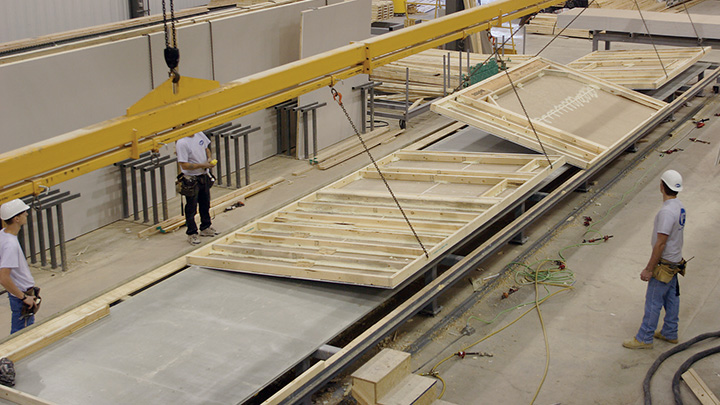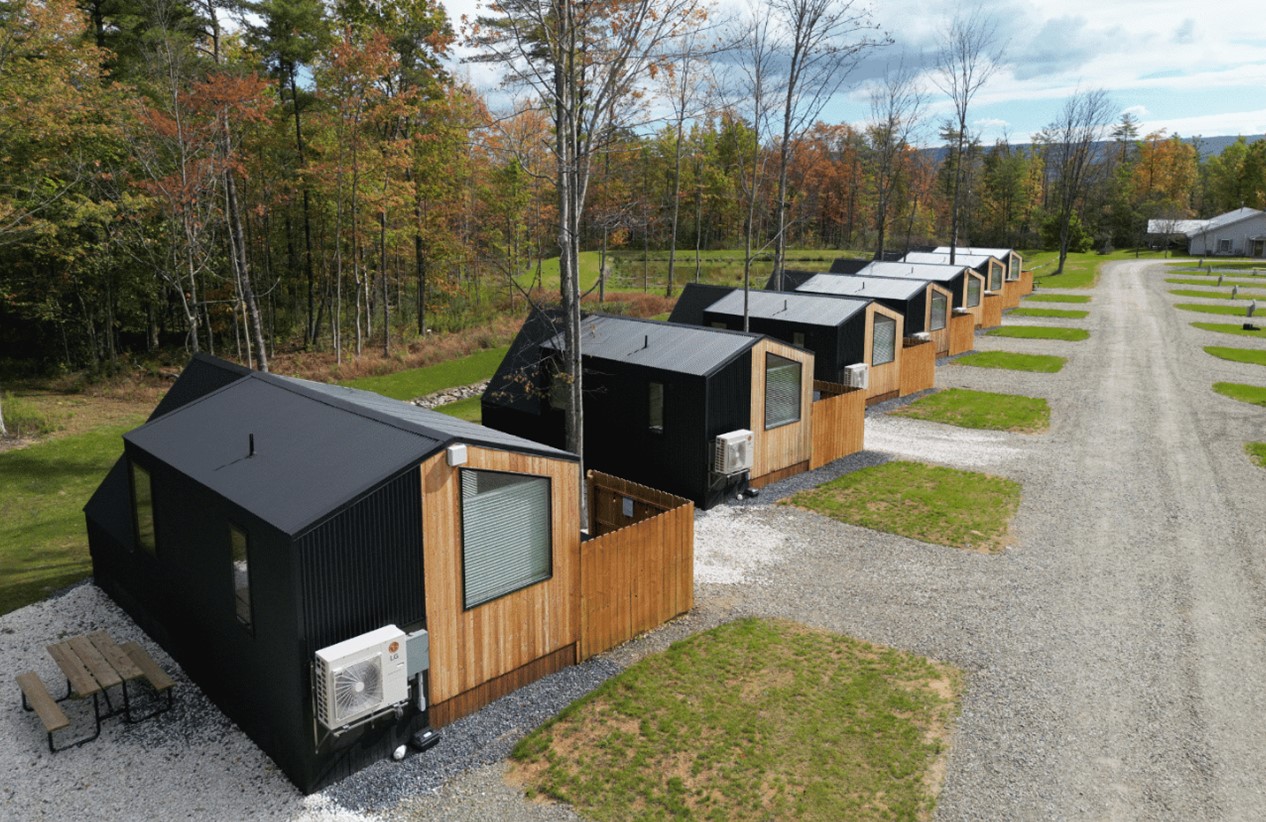The conversation about powering the future isn’t just about how many EV chargers we need—it’s about where the power will come from. With millions of electric vehicles expected to plug in over the next decade and AI data centers multiplying like mushrooms after a rainstorm, it’s fair to ask: can solar panels and wind turbines keep up? And will the U.S. grid be able to handle it all without leaning harder on backup fossil power?
Let’s break it down.
How Many Panels and Turbines Does It Take to Run a Charger?
It sounds simple: put up a few solar panels or a windmill and plug in your car. But the math is sobering.
- A typical Level-2 charger (like you’d find at home or at work) draws about 7 kW. To meet that purely with solar at peak midday sun, you’d need about 18 panels (400W each).
- A DC fast charger (150 kW), the kind that juices a car in 20–30 minutes, would need roughly 375 panels just to match the peak demand—closer to 750 panels if you want to cover annual usage reliably.
- Want to go bigger? A 350 kW ultra-fast charger would gulp power equivalent to 875 panels for peak demand or nearly 1,500 panels for steady annual supply.
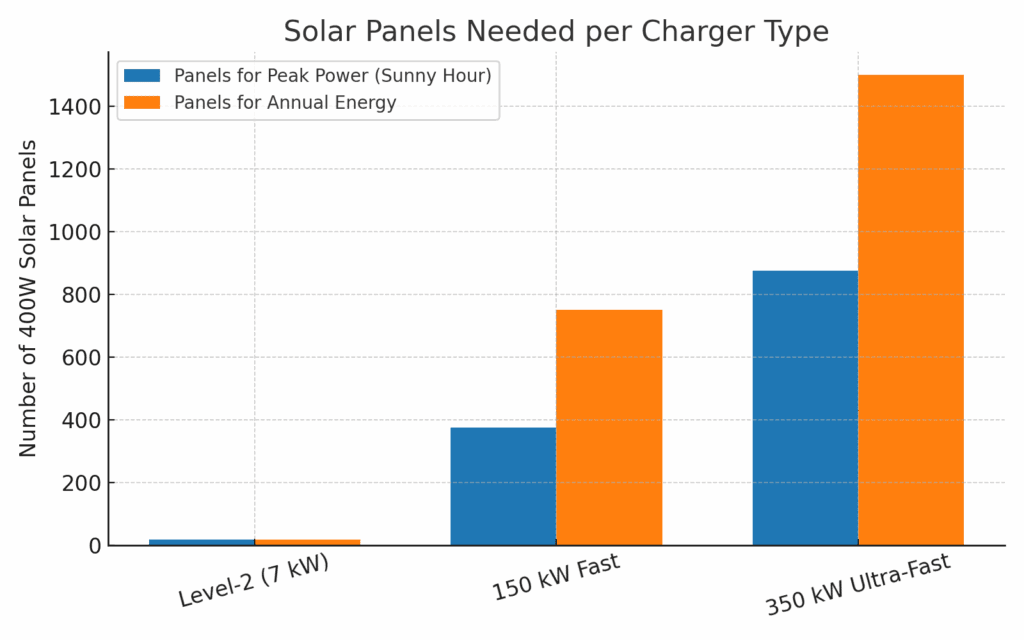
“It only takes ~18 solar panels to match a home charger’s power at noon… but nearly 375 panels for a single 150 kW fast charger. Covering real-world annual usage? Closer to 750 panels. Ultra-fast chargers jump into the thousands.”
For wind, the story isn’t much better at the small scale. A 5 kW turbine produces about 8,700 kWh a year, so you’d need dozens of them to offset just a single busy charging plaza. A single modern utility-scale wind turbine (2.5 MW) can cover the annual energy for a site with several fast chargers—but no one’s putting a 400-foot rotor in the gas station parking lot.
The reality is that most “solar EV stations” are hybrids: they build a canopy with as much PV as the lot allows, add a battery bank for smoothing, and stay tied to the grid for reliability.
Why the Grid Still Matters
If EVs were the only new load coming, utilities could probably manage with steady renewable expansion. But add AI data centers—which chew through power 24/7—and things get trickier.
- AI and data centers: U.S. data center demand could double or even triple by 2028, up from roughly 4–5% of total U.S. electricity today. Training large AI models is already driving “power panic” in Virginia, Texas, and Ohio.
- EVs: Analysts expect EVs will add 100–185 TWh per year to U.S. demand by 2030. That’s like adding the annual usage of a mid-sized U.S. state.
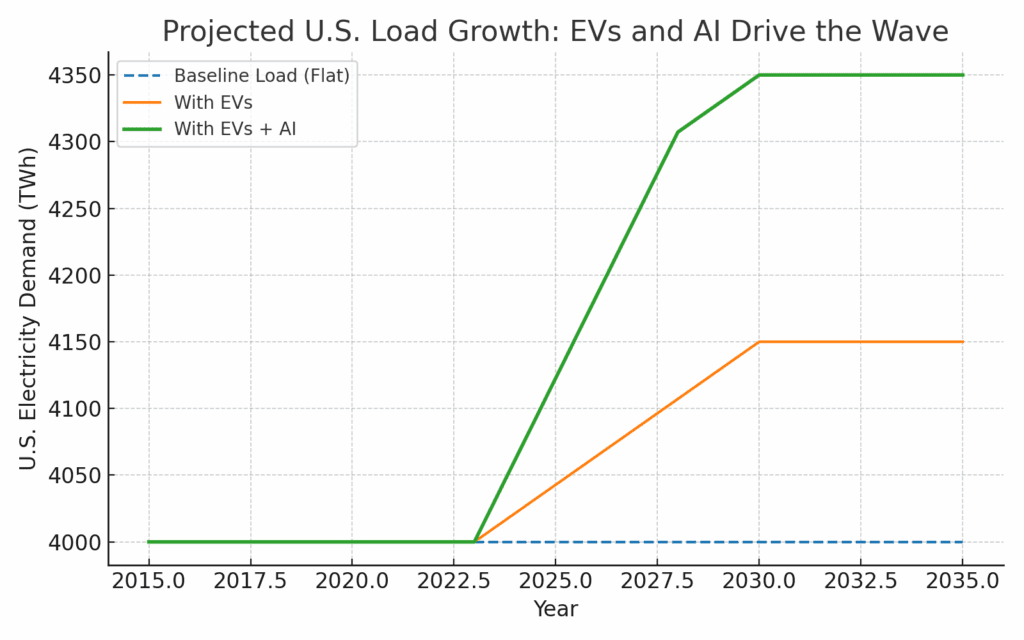
“After a flat decade, U.S. demand is climbing again. By 2030, EVs could add ~100–185 TWh, while AI data centers are on track to double or triple their draw by 2028. We’re entering a new ‘load growth decade.’”
Together, these two growth curves end a decade-long era of flat electricity demand in America. We are moving into a “load growth decade” where building out generation and transmission is once again front-page news.
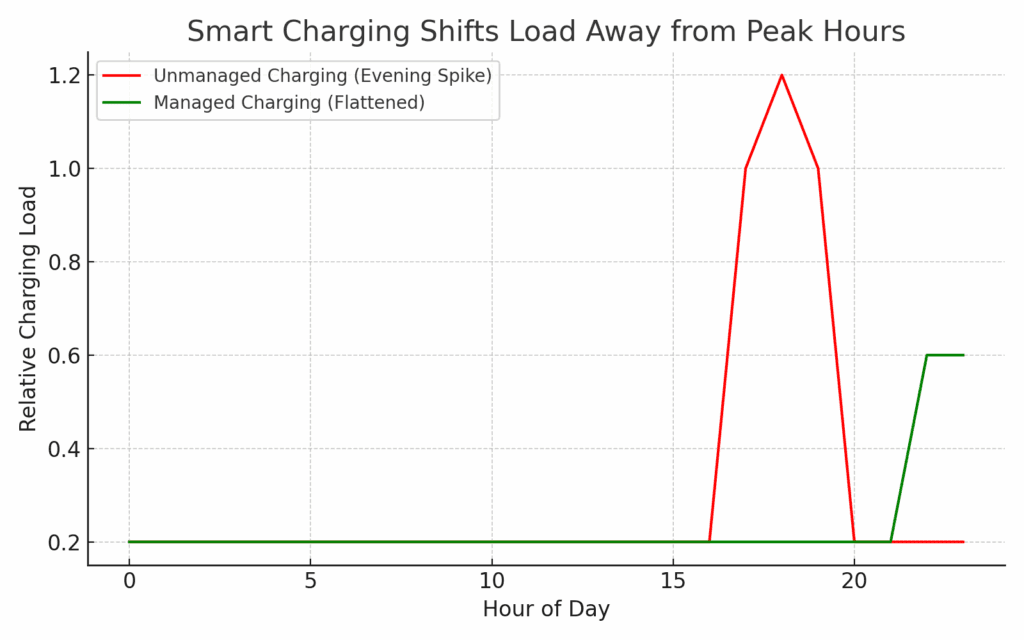
“Unmanaged EV charging spikes the grid right when everyone comes home. Managed charging can shift 98% of that load to overnight, avoiding billions in new peaker plants.”
Can We Avoid More Fossil Backup?
Not entirely—but the amount matters. Here’s how the U.S. can cover these new loads without a big fossil rebound:
- Managed charging: Real-world pilots show that smart scheduling and dynamic pricing can push 98% of home EV charging off-peak, flattening the evening surge. That alone saves billions in avoided peaker plants.
- Bigger wires: New federal rules (like FERC Order 1920) are forcing regional grids to plan 20 years ahead, which helps cheap renewable power actually flow to where it’s needed. Transmission may be the least sexy but most essential fix.
- Clean firm power: Big tech is leading the way here. Google, TVA, and Kairos are already lining up small modular nuclear reactors to directly feed AI data centers. Hydro, geothermal, and even hydrogen are also in the mix.
- Storage everywhere: Battery costs continue to fall, and utility-scale storage is booming. Pairing storage with solar and wind turns them from “fair weather friends” into real contributors to peak capacity.
My Final Thoughts
A single EV charging station can be “solar powered” in marketing terms, but without the grid, batteries, or firm generation, it’s a sunny-day-only solution. On a national scale, the wave of EVs and AI data centers will demand serious investment—but not necessarily a surge in fossil generation hours.
The U.S. grid of the 2030s will look different: more renewable capacity, more storage, more transmission, more nuclear, and smarter demand. Fossil plants will still exist, but running fewer hours—used as true backup instead of everyday workhorses.So the next time you see a solar canopy over a charger, think of it as a symbol: not of total independence from the grid, but of the direction the grid itself is moving—toward a cleaner, smarter, and more resilient backbone that can handle both your Tesla and the servers training the next GPT model.




